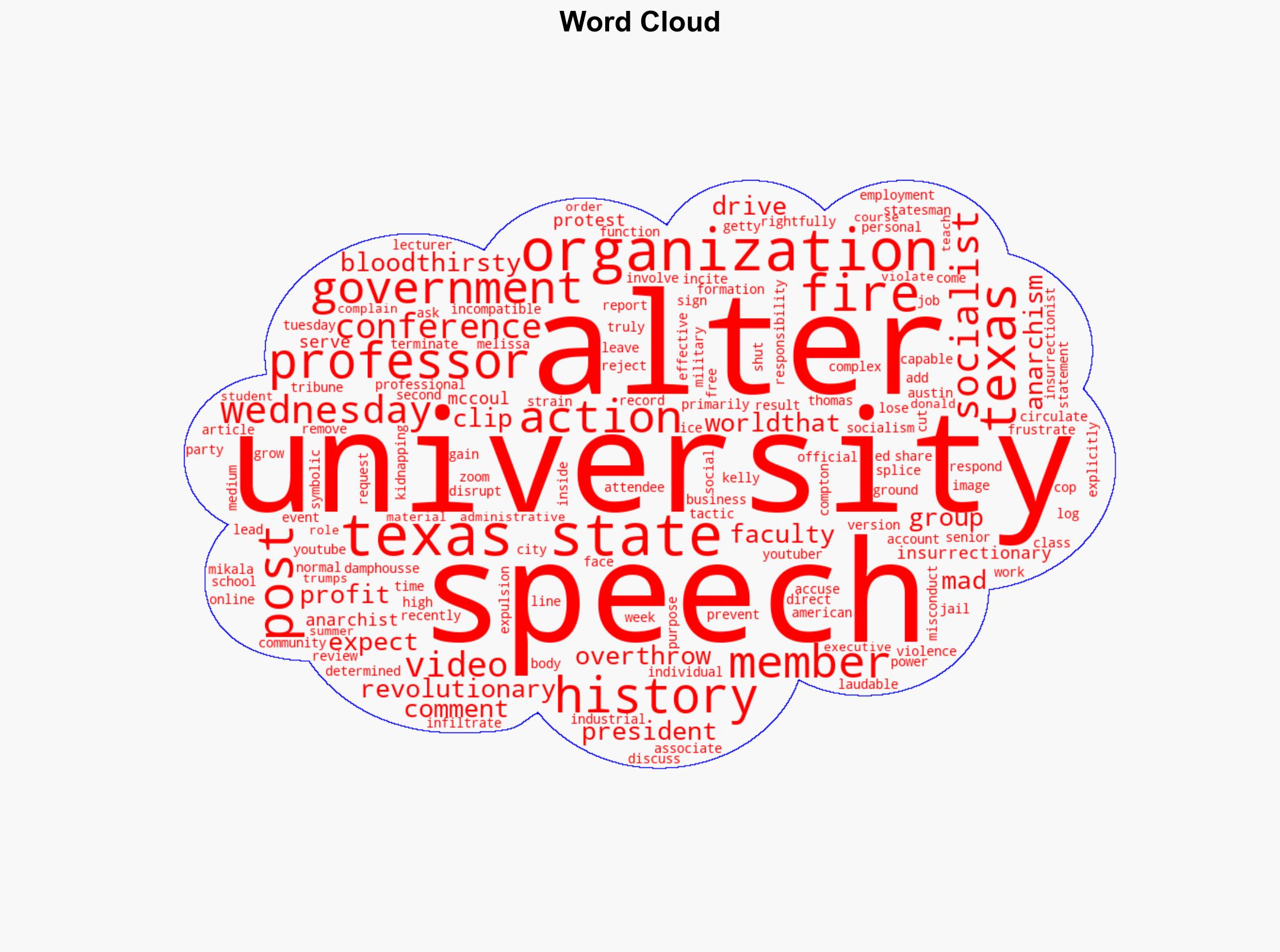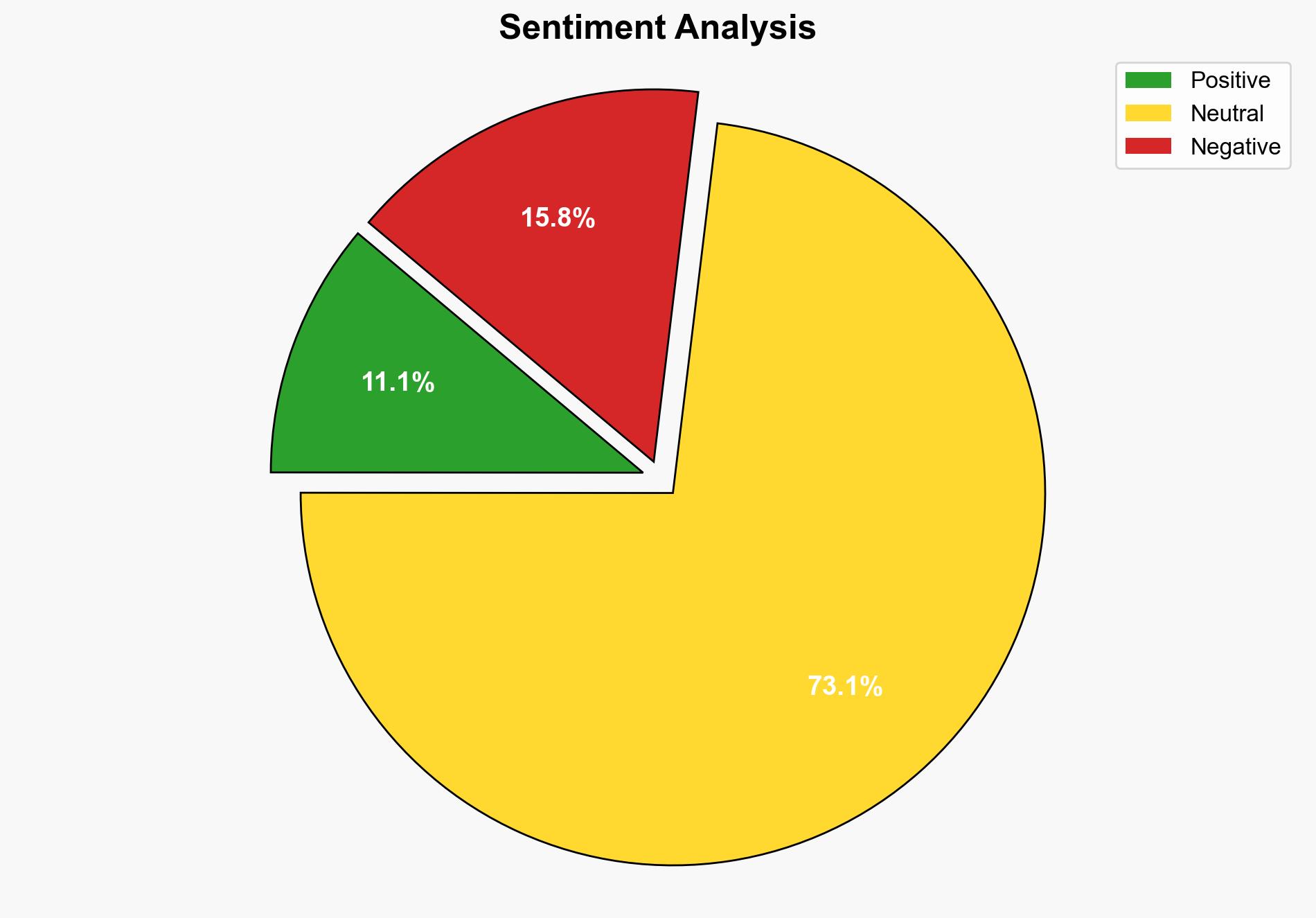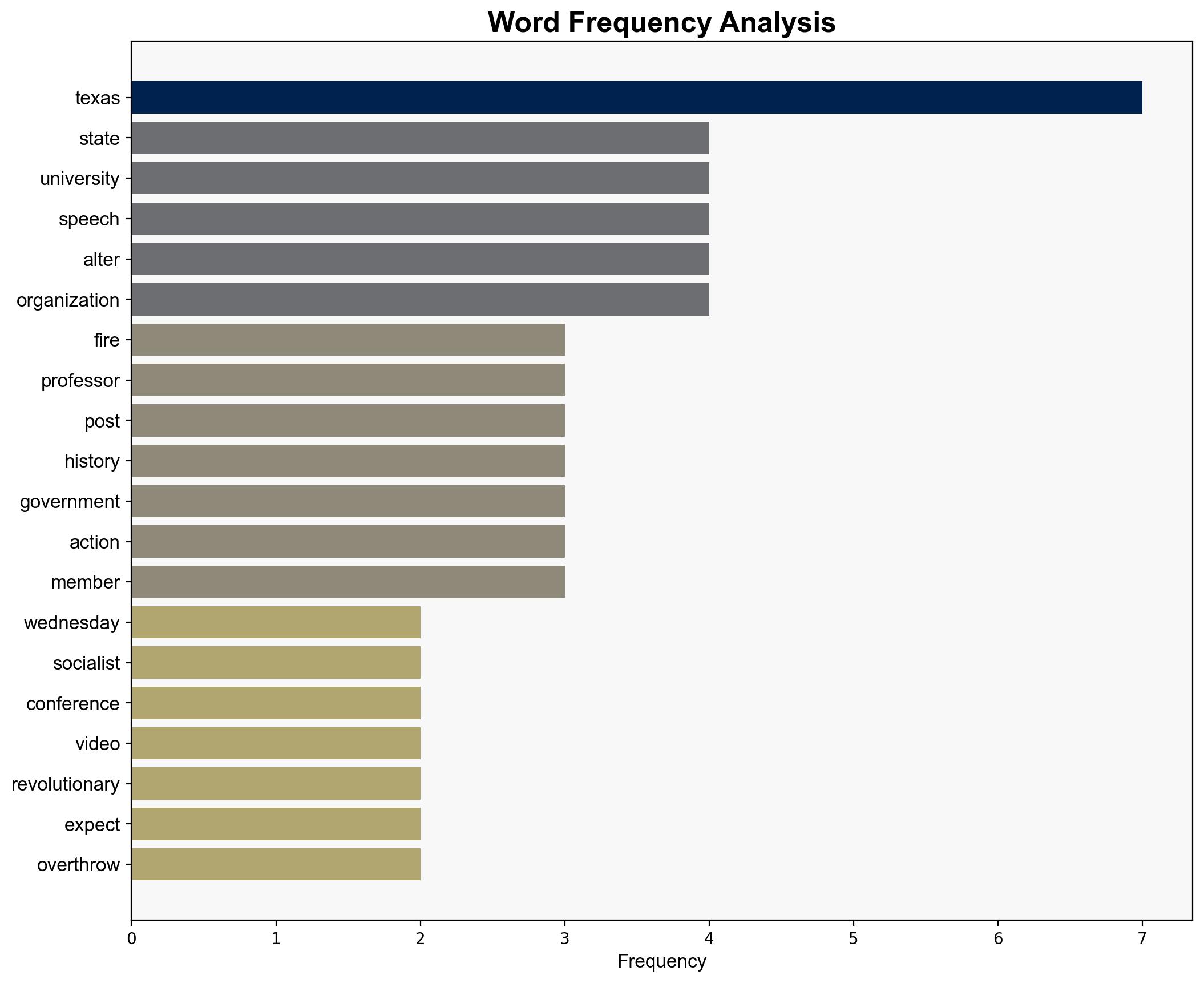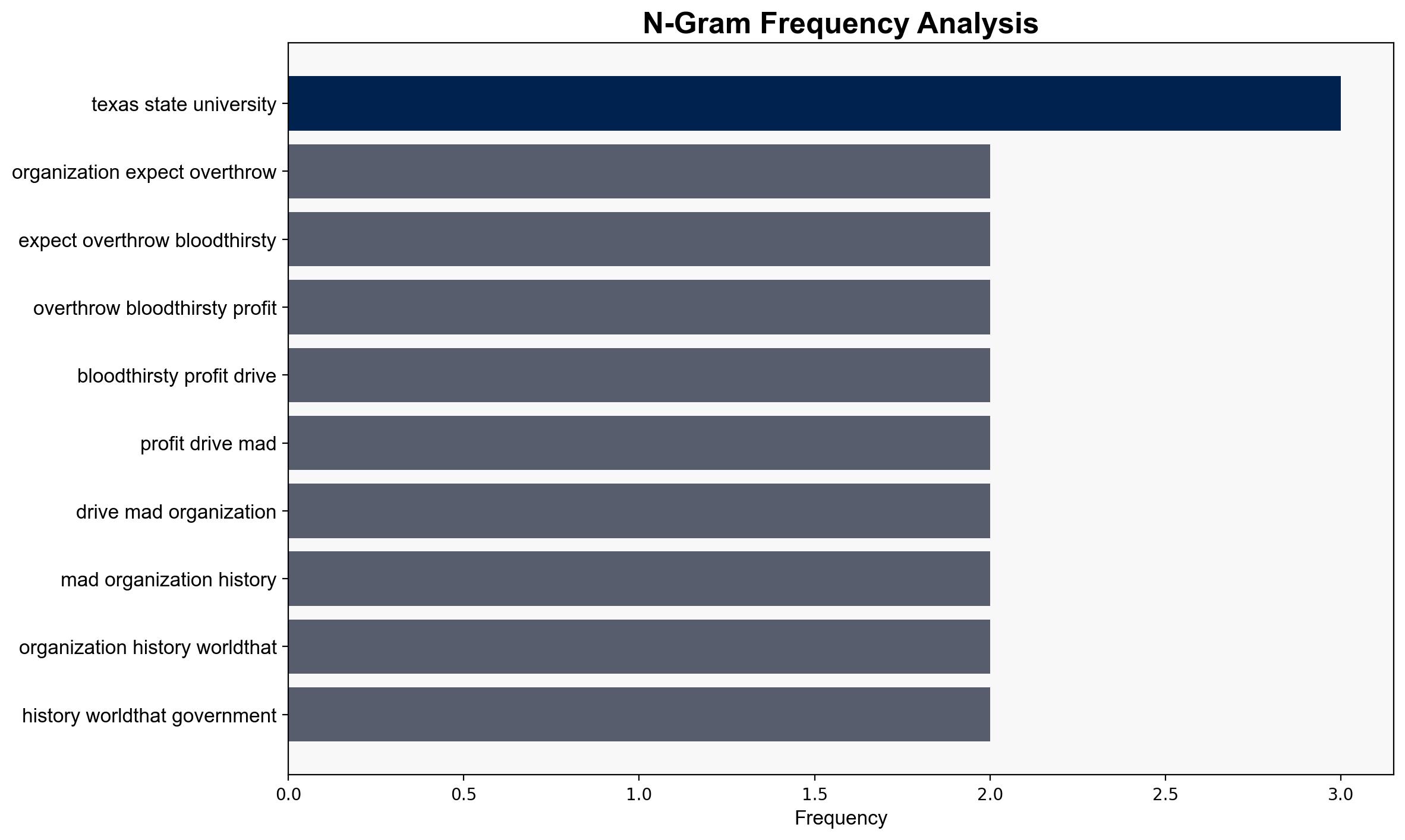Texas State Fires Professor Accused of Inciting Violence – Inside Higher Ed
Published on: 2025-09-12
Intelligence Report: Texas State Fires Professor Accused of Inciting Violence – Inside Higher Ed
1. BLUF (Bottom Line Up Front)
The most supported hypothesis is that Texas State University’s decision to terminate the professor was primarily driven by concerns over reputational risk and adherence to state policies on academic conduct. Confidence level is moderate, given the complexity of academic freedom versus state policy compliance. Recommended action includes monitoring similar cases for patterns that may indicate broader policy shifts impacting academic institutions.
2. Competing Hypotheses
1. **Hypothesis A**: The termination was a direct response to the professor’s speech, perceived as inciting violence, which violated university policies and state laws.
2. **Hypothesis B**: The termination was influenced by external political pressures and a broader agenda to suppress certain ideological perspectives within academic settings.
Using ACH 2.0, Hypothesis A is better supported due to the explicit mention of professional misconduct and the university’s statement on the incompatibility of the professor’s actions with faculty responsibilities. Hypothesis B lacks direct evidence but remains plausible given the political climate and recent similar actions against other faculty members.
3. Key Assumptions and Red Flags
– **Assumptions**: It is assumed that the university’s decision was based solely on policy violations without external influence. Another assumption is that the video clip accurately represents the professor’s speech.
– **Red Flags**: The potential for the video to be edited or taken out of context is a significant concern. The lack of response from the professor adds uncertainty to the narrative.
– **Blind Spots**: The broader political context and its influence on university decisions are not fully explored.
4. Implications and Strategic Risks
The case highlights potential risks of escalating tensions between academic freedom and state policies. If similar actions increase, there could be a chilling effect on academic discourse, impacting educational institutions’ reputations and faculty recruitment. Additionally, the incident could fuel ideological divides, affecting campus stability and public perception.
5. Recommendations and Outlook
- Monitor similar cases across other universities to identify trends and potential policy shifts.
- Engage with academic institutions to develop guidelines balancing academic freedom with compliance to state laws.
- Scenario-based projections:
- Best Case: Universities and state bodies reach a consensus on guidelines, minimizing conflicts.
- Worst Case: Increased state intervention leads to widespread suppression of academic discourse.
- Most Likely: Continued case-by-case handling with occasional high-profile incidents.
6. Key Individuals and Entities
– Thomas Alter
– Kelly Damphousse
– Melissa McCoul
7. Thematic Tags
national security threats, cybersecurity, counter-terrorism, regional focus





